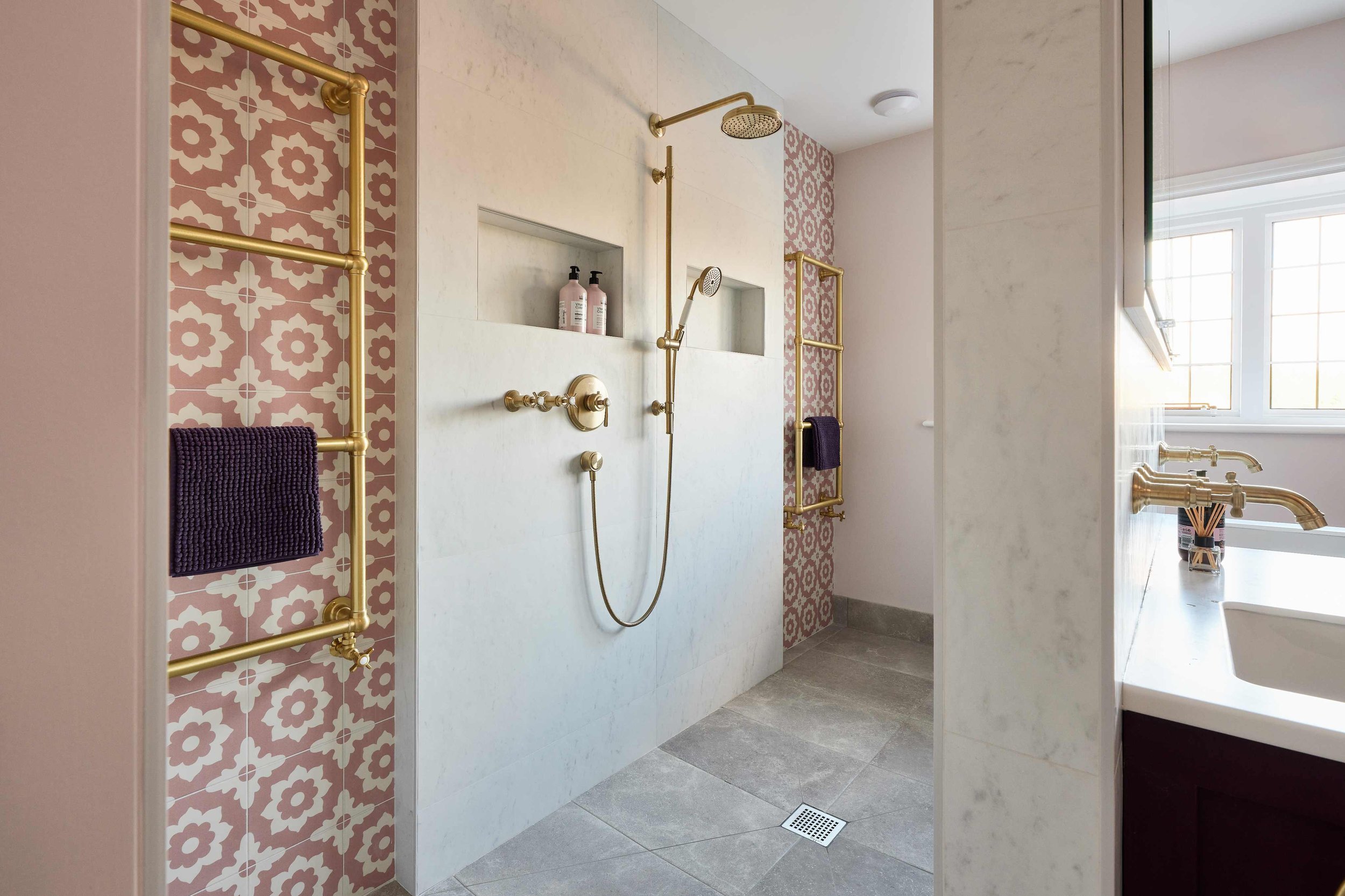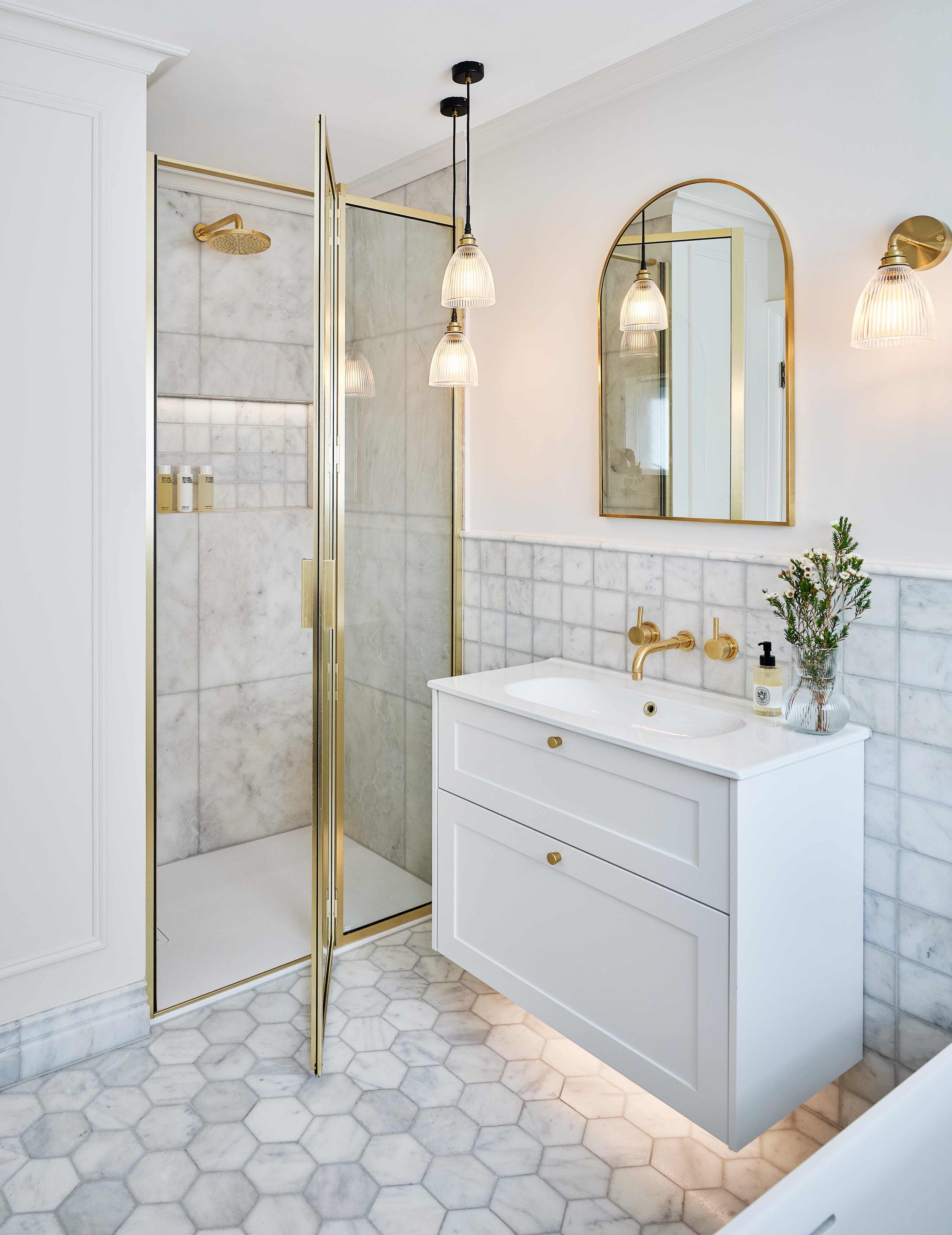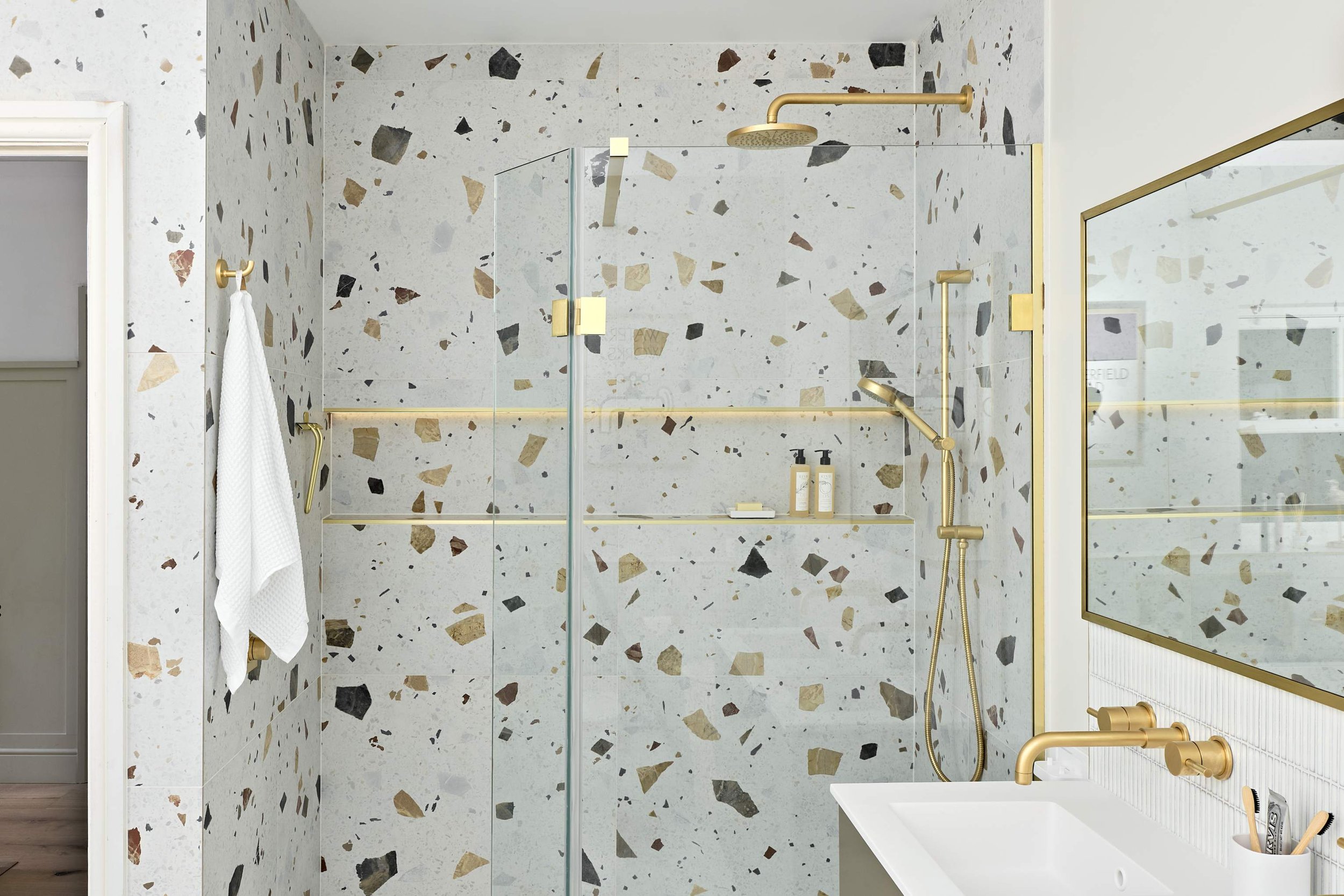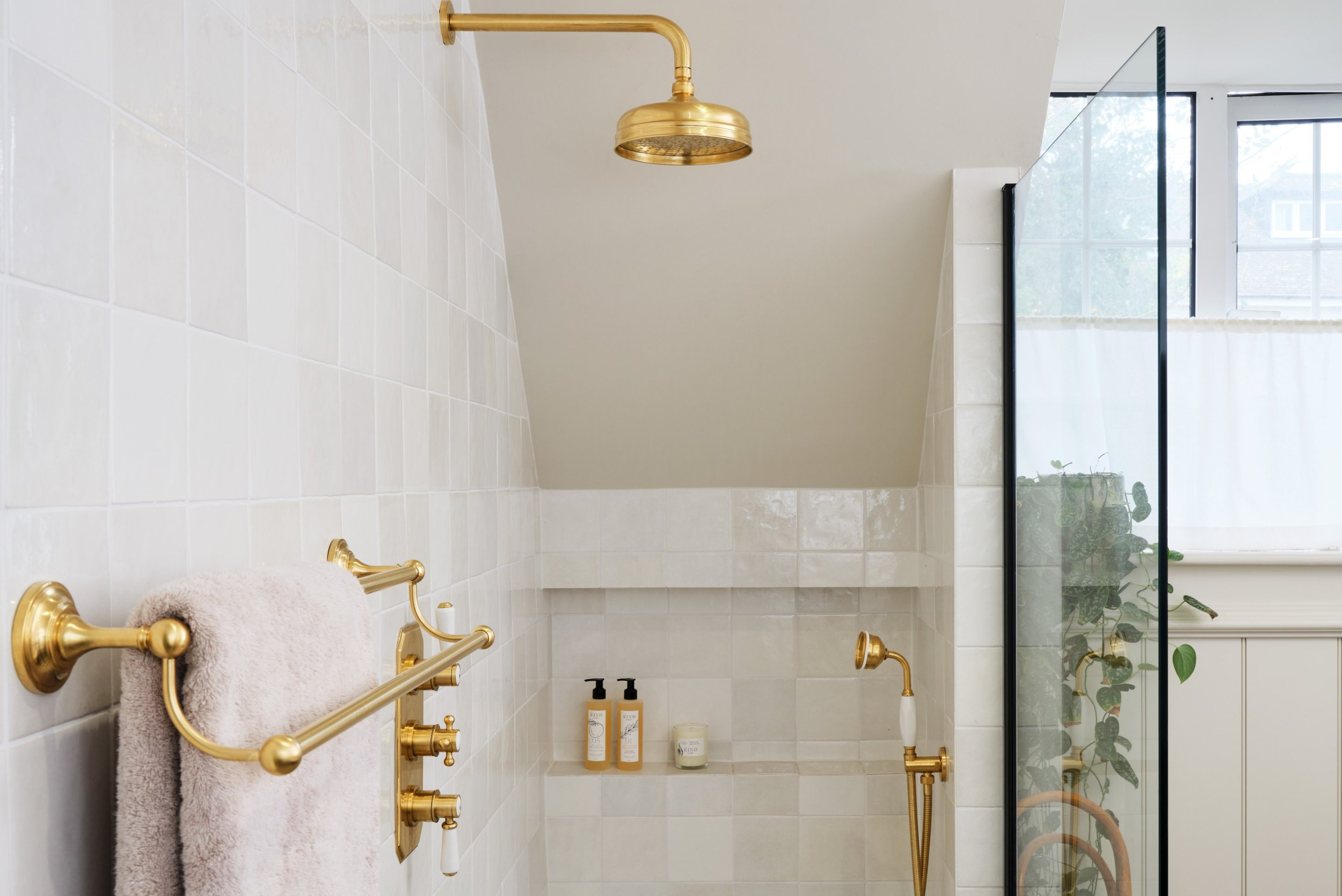Designer advice: How to design the perfect shower space
Designing a shower space is one of the most exciting - and technical - aspects of planning a new bathroom. Whether you're dreaming of a spacious walk-in shower or a luxurious enclosure with all the latest features, getting the details right makes all the difference. At Ripples, our expert designers Jo, Leanne and Richard share their insights on how to create a beautiful and functional shower space that fits your lifestyle.
Where do you start when designing a shower space?
Leanne: As a starting point, look at the available space, drainage and water pressure to see what is physically possible. Have you got enough head height? Do you need a pump? Does the floor need to be raised to get the waste away? Once you’ve established these fundamentals, you can explore whether you prefer a wet floor or shower tray, and whether a walk-in shower or a full enclosure suits your needs. Sometimes the space will dictate what’s best.
And I’d definitely recommend thinking about how you like to shower. Do you love the idea of an oversized drenching shower, or would you prefer something moveable so you don’t always have to get your hair wet?
Jo: When designing a shower space, I always start by figuring out the available space for the shower itself - and how it works with the rest of the bathroom. This is key so you can consider things like drainage and access. How are you going to get into the shower? If you’re having a door, how will it interact with the other products in the space?
Another crucial starting point is research. Look at different bathroom settings online, on showroom websites, Pinterest, and in magazines. What do you like? What don’t you like? Gathering inspirational images helps your designer understand your vision and create the right space for you.
Richard: For me, it all starts with understanding the client’s needs. Do they want an enclosure to contain the steam, or are they after a walk-in shower with fewer moving parts and less to clean? Then it’s a case of deciding between a shower tray or a wet room floor. Both options will influence the size and location of the shower, as they each utilise space differently. Getting that right is key to containing water and making the space work.
Are there different styles of showers?
Leanne: There are so many options when it comes to shower fittings. From large fixed overhead showers with multiple spray patterns, to smaller handsets on brackets or riser rails - and even body jets. You can configure your shower to suit you. Larger shower heads offer wider coverage and a softer drenching experience. If you prefer a stronger, punchier shower, consider smaller clubmaster styles. Hand showers are also really versatile - you can easily take them off, making them great for cleaning or if you don’t always want to get your hair wet.
And I always recommend investing in a thermostatic valve to control your shower. This could be an exposed bar style, but if your budget allows, go for a sleek concealed option. You can then position the valve away from the shower head, so you can turn it on without getting wet. If you really want to go all out, digital showers now offer user profiles, mood lighting, aromatherapy and even music - all at the touch of a button!
Jo: There’s a huge range of different shower styles to choose from. Starting with the showering area itself - your main options are a full enclosure or a walk-in space with a fixed glass panel. The choice often comes down to your lifestyle and the room layout. Walk-ins give a more open, seamless feel, but enclosures help contain steam and water splashes.
For shower floors, the most popular choice in our London showroom is still a tiled wet floor. It creates a seamless look and makes the room feel bigger. Plus, you can run underfloor heating right through it, which is brilliant for warmth and drying up water. If the plumbing requires it, you can install this on a raised platform, although I’d suggest using that option mainly with enclosures unless you’ve got a very large area.
Alternatively, solid surface trays are a fantastic option. They come in lots of colours, textures and drain styles - and you can fit them flush to the floor or slightly raised. They can complement tiles or make a real statement in their own right.
When it comes to the actual showers, the classic choice is a fixed head from the ceiling or wall, teamed with a hand shower on a bracket or riser rail. Within that, there’s a world of choice - different spray patterns, eco water options, finishes and materials. Then there are extras like body jets, steam, misting features and chromotherapy.
Richard: There’s such a variety of different types of shower spaces, heads and functions out there. That’s why I’d always recommend speaking to a qualified designer who can guide you through the options. It’s easy to get confused if you’re just looking online or in a catalogue. For example, some shower heads require specific parts to make them operate, or different controls - and you might not realise that without expert advice.
At the end of the day, it comes down to the experience you want. Are you after a quick, energising shower where a wide spray head covers the body efficiently? Or do you want relaxation with soft water flow, warm temperatures and maybe chromotherapy lighting? A designer can help match the right products to your water pressure and system - because there’s nothing worse than installing a beautiful shower head and getting a disappointing dribble of water!
What do you need to consider when buying a shower?
Leanne: Start by thinking about how you like to shower - and who will be using the space. Do you want fluted glass panels for a classic look, or a minimal design with no glass at all? Consider drainage: your waste capacity needs to be higher than your shower head’s output, and you may need to create a raised platform to achieve the right fall.
Trays now come in lots of colours and finishes, but if you love that seamless, open look, a wet floor is still the best. Also think about your wall coverings—tiles can be a statement feature, but smaller ones mean more grout to clean.
And check if your water system needs upgrading. High pressure will give you more choice and a better shower experience.
Jo: Who’s using it? That might affect the type of head, the height of fittings, whether you need grab bars, seats, or a hand shower for kids.
Ceiling height is important - not just for shower heads, but also for the glass panels.
Think about plumbing - ideally, you want controls placed at the entrance of the shower so you don’t get wet when turning it on. And know whether your walls are solid or stud work. Some valves have parts that go behind the wall, and they’re not suitable for external walls.
Water pressure is key - know what boiler system you have, and get your installer to check everything before ordering. Some items are special order, and you want to be sure they’ll work.
Also, finishes: do you want a PVD or lacquered finish that stays looking the same? Or a living finish that ages and changes over time? The latter isn’t for everyone, especially as different parts age at different rates.
Richard: Before buying anything, ask yourself, what showering experience do I want? Quick and efficient? Luxurious and relaxing? Once you know that, a designer can guide you to the right products that work with your water pressure. The last thing you want is a stunning shower head that underperforms because of low pressure. Understanding your home’s plumbing is crucial.
Who is best to design a shower space?
Leanne: Speak to a bathroom designer who understands what’s available and can match products to your needs. They’ll consider the look and feel of the space - tiles, colours, finishes - but also the practical elements like water pressure and drainage, how far water travels from the head, and how much glass you’ll need.
Jo: An expert, ideally a designer with experience. They know what’s out there, which questions to ask, and how to make sure you’re buying a product that will last 10+ years. It’s why going into a showroom is so important.
Richard: Always talk to a qualified designer. They’ll help you navigate the huge number of choices and ensure the configuration suits your home and lifestyle. They’ll also spot any potential issues early on - whether that’s water pressure, layout, or technical requirements.




